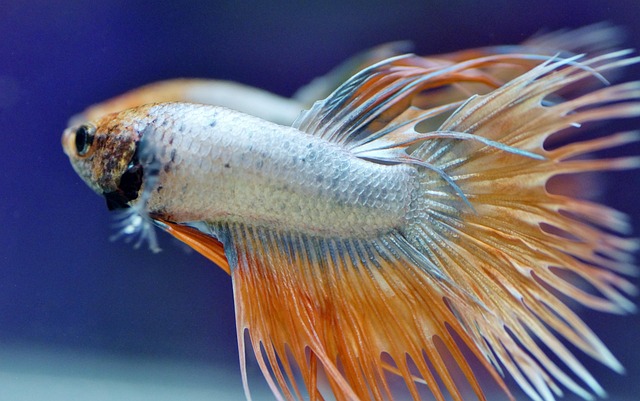Maintaining crystal-clear water in a home aquarium design requires tailoring filtration systems to tank size, fish number, substrate, and décor. High-quality filters with adjustable flow rates, multi-stage media, and pre-filters ensure optimal performance. Carbon and Reverse Osmosis (RO) filters enhance aesthetics and purify water, while combination filters offer the best of both. Regular partial water changes and monitoring key parameters support a healthy ecosystem. Advanced filtration systems with mechanical traps and biological filters foster a vibrant underwater environment in your home aquarium design.
“Achieving crystal-clear water in your home aquarium is not just about aesthetics; it ensures a healthy environment for your aquatic friends. This comprehensive guide delves into the intricacies of high-quality filtration systems, crucial for maintaining optimal water quality. From understanding water quality parameters specific to aquariums to exploring diverse filtration types, we equip you with knowledge. Learn how to select efficient filters and discover tips for routine maintenance, ensuring your home aquarium design is a vibrant, pristine oasis.”
Understanding Water Quality for Home Aquariums
Maintaining water quality is paramount for the health and longevity of any home aquarium. Before selecting a filtration system, it’s crucial to understand the unique needs of your aquatic ecosystem. Factors such as tank size, number of fish, type of substrate, and décor influence the level of filtration required. For example, larger aquariums with more fish or complex home aquarium designs often demand more powerful filtration to keep up with organic waste production and prevent harmful buildup.
Proper water circulation and regular water changes are also essential components of a healthy aquarium environment. High-quality filtration systems for home aquariums should incorporate features like adjustable flow rates, multi-stage filtration media, and pre-filters to ensure optimal performance. These advanced mechanisms capture and remove particles, chemicals, and biological matter, contributing to crystal-clear water and a thriving underwater ecosystem.
Types of Filtration Systems: A Comprehensive Overview
Choosing a filtration system is an essential aspect of setting up a thriving home aquarium. There are several types available, each designed to cater to specific needs and water quality requirements. Carbon filters, for instance, are popular for their ability to remove unpleasant odors and colors, making them ideal for enhancing the aesthetic appeal of your home aquarium design. These filters work by using activated carbon that adsorbs contaminants, ensuring crystal-clear water.
Reverse Osmosis (RO) systems, on the other hand, offer a more comprehensive solution by removing a wide range of impurities, including heavy metals and dissolved solids. This makes RO an excellent choice for maintaining optimal water quality, especially in areas with high mineral content. For those seeking a balanced approach, combination filters that utilize both carbon and RO technologies can provide the best of both worlds, delivering not just clear water but also improved taste and odor profiles to complement your home aquarium design.
Selecting High-Efficiency Filters for Crystal Clear Water
When it comes to achieving crystal-clear water in your home aquarium design, selecting the right high-efficiency filters is paramount. These advanced filtration systems are designed to remove a wide range of impurities, from sediment and debris to harmful chemicals and microorganisms. Look for filters that utilize multiple stages of filtration, often including pre-filters, carbon filters, and particulate filters, to ensure comprehensive water purification.
High-quality filters should be capable of handling the specific needs of your aquarium size and the types of fish you plan to house. For instance, larger aquariums with more inhabitants may require more powerful filtration to keep up with the increased waste production. Additionally, certain fish species can be more demanding in terms of water quality, necessitating advanced filter systems that can meet their unique requirements.
Maintaining Optimal Conditions: Tips and Tricks
Maintaining optimal conditions in your home aquarium design goes beyond aesthetics; it ensures the health and longevity of its inhabitants. Regular water changes are crucial, aiming for 10-20% weekly to flush out accumulated waste products. Monitoring water parameters like pH levels, ammonia, nitrite, and nitrate is essential using reliable test kits. This proactive approach enables quick adjustments to maintain a balanced ecosystem.
Consider implementing advanced filtration systems tailored to your aquarium’s size and resident species. High-quality mechanical filters trap physical debris, while biological filters support beneficial bacteria growth, breaking down organic compounds. Additionally, incorporating carbon filtration enhances water clarity and improves odor control, contributing to a pristine home aquarium design that supports a vibrant underwater ecosystem.
High-quality water filtration systems are essential for maintaining a healthy and vibrant home aquarium design. By understanding water quality needs, exploring different filter types, and selecting efficient filters, you can ensure crystal-clear water that supports the well-being of your aquatic inhabitants. Regular maintenance, including routine cleaning and monitoring, will help keep your aquarium in optimal condition, creating an enchanting underwater world for years to come.
